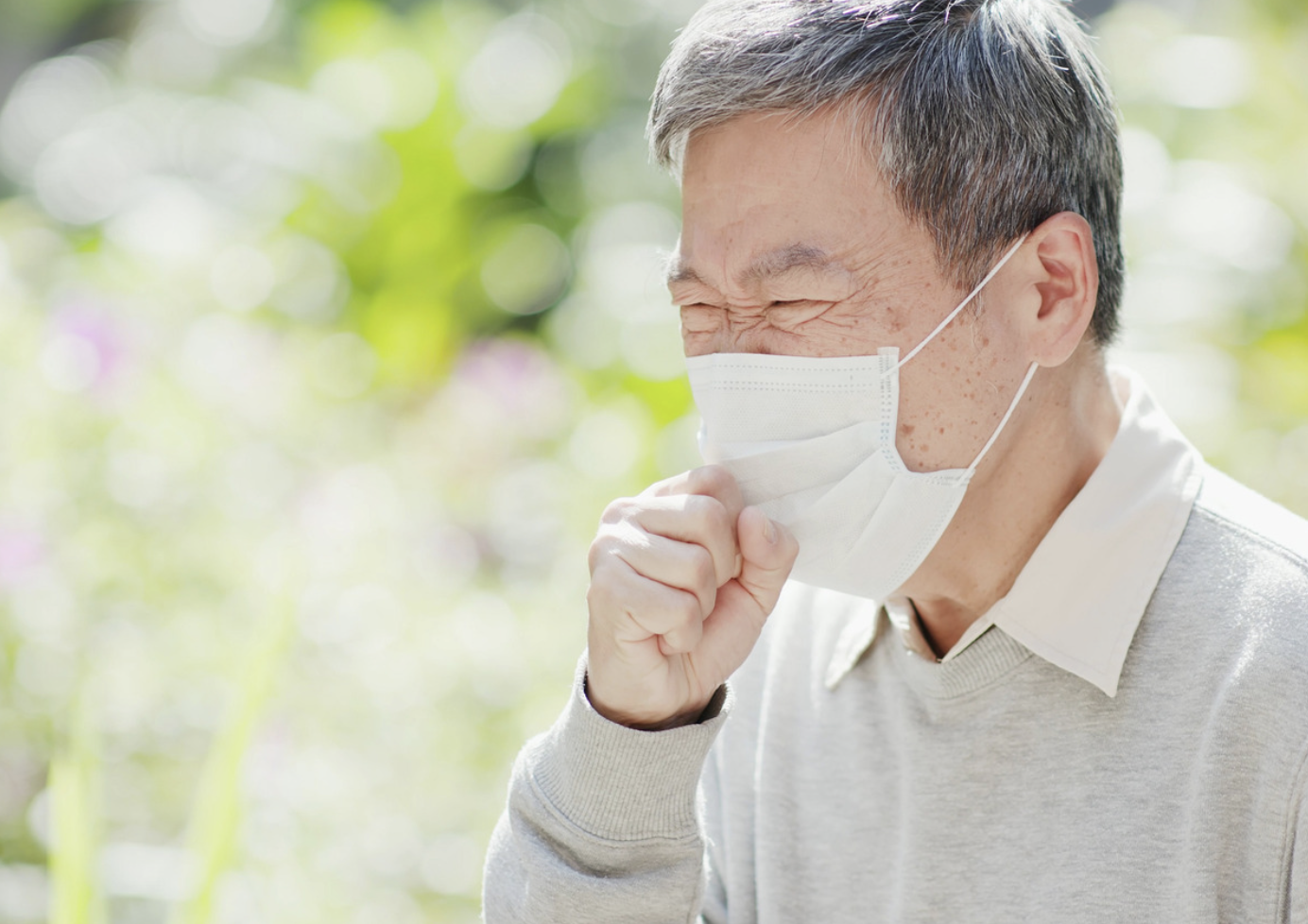Definisi
Tumor adalah pertumbuhan jaringan abnormal yang terjadi ketika sel membelah terlalu cepat atau mengalami kematian sel yang abnormal. Tumor paru adalah tumor yang tumbuh pada jaringan paru atau saluran nafas yang menuju ke paru. Ini adalah kondisi yang cukup sering ditemukan, yaitu pada 1 dari 500 rontgen dada dan pada 1 dari 100 CT scan dada. Sebuah tumor paru dapat merupakan tumor jinak atau ganas (kanker), namun sebagian besar tumor paru bersifat jinak. Tumor jinak dan ganas dapat dibedakan dari karakteristiknya. Berikut ini adalah karakteristik tumor jinak:
- Tidak menyebar ke bagian tubuh lain, tidak seperti kanker
- Pertumbuhannya lambat atau bahkan dapat berhenti bertumbuh dan mengecil sendiri
- Biasanya tidak mengancam nyawa
- Biasanya tidak perlu diangkat, kecuali berukuran besar dan menyebabkan gejala
- Dapat membesar dan menekan jaringan sekitarnya namun tidak mengakar maupun merusak jaringan tersebut
Benjolan berukuran lebih dari 3 cm biasanya disebut tumor, sedangkan tumor yang berukuran 3 cm atau kurang biasanya disebut nodul. Jika nodul tersebut ada di paru maka disebut nodul paru. Nodul paru ini biasanya dikelilingi oleh jaringan paru normal dan dapat berjumlah satu atau beberapa. Tipe dari tumor atau nodul paru jinak adalah:
- Hamartoma: merupakan tumor paru jinak yang paling sering ditemukan dan penyebab nodul paru tunggal ketiga paling sering. Tipe ini merupakan 55% dari seluruh tumor jinak paru, dan 8% dari seluruh tumor paru. Setidaknya 80% ditemukan pada bagian luar paru dan sisanya tumbuh di saluran nafas yang menuju ke paru. hamartoma terdiri dari jaringan normal seperti tulang rawan, jaringan penyambung, lemak, dan otot namun dengan jumlah yang normal. Biasanya tumor ini berukuran kurang dari 4 cm dan dapat terlihat di rontgen dada. Hamartoma biasanya hanya tumbuh di area yang terbatas dan tidak menekan struktur sekitarnya. Tumor ini ditemukan lebih sering pada pria daripada wanita, dan pada usia 50-70 tahun
- Adenoma bronkus: merupakan tipe nodul paru jinak lainnya yang tumbuh pada saluran nafas besar (bronkus) dan pada kelenjar lendir atau salurannya pada tenggorokan
- Papilloma: merupakan tipe tumor jinak paru yang jarang ditemukan. Tumor ini tumbuh pada permukaan saluran nafas, sehingga bentuknya menonjol keluar
Masih banyak tipe tumor paru lainnya yang jarang ditemukan, misalnya kondroma, fibroma, neurofibroma, dan lipoma. Tumor-tumor ini terdiri dari jaringan penyambung atau jaringan lemak.
Penyebab
Penyebab tumor dan nodul paru jinak belum diketahui secara pasti. Terdapat banyak penyebab yang diduga dapat pertumbuhan nodul dan tumor paru jinak. Penyebab tersebut antara lain:
- Granuloma (kumpulan sel radang) yang terbentuk akibat infeksi bakteri di paru, misalnya tuberkulosis (flek paru atau paru-paru basah) atau infeksi jamur di paru (histoplasmosis, kriptokokosis, aspergilosis, dan lain-lain)
- Abses paru (kantung berisi nanah yang disebabkan oleh infeksi bakteri)
- Peradangan akibat penyakit seperti penyakit sendi rematik, sarkoidosis, dan Wegener’s granulomatosis
- Infeksi human papillomavirus (HPV)
- Kelainan kongenital seperti kista paru, atau kondisi paru abnormal lainnya
Beberapa tumor paru tidak diketahui penyebabnya.
Faktor Risiko
Semua orang dapat menderita nodul atau tumor paru. Namun, tumor tersebut lebih mungkin menjadi kanker bila terdapat beberapa faktor risiko seperti:
- Sekitar setengah dari orang yang merokok dan berusia lebih dari 50 tahun akan memiliki nodul paru pada CT scan dadanya dan lebih berisiko ganas
- Usia lebih dari 65 tahun
- Memiliki riwayat keluarga dengan kanker
- Pernah menerima terapi radiasi dada
- Pernah terpapar asbestos, radon, atau merupakan perokok pasif
Gejala
Lebih dari 90% nodul paru ditemukan secara tidak sengaja saat seseorang melakukan pemeriksaan rontgen atau CT scan dada untuk indikasi lain. Oleh karena itu, kebanyakan tumor jinak paru tidak memberikan gejala.
Jika memang terdapat gejala, yang dapat muncul adalah:
- Batuk ringan yang bertahan lama
- Sesak nafas, nafas berat
- Nafas berbunyi mengi saat membuang nafas
- Batuk darah
- Suara berisik pada dada
- Demam, terutama jika disertai dengan infeksi paru
Diagnosis
Untuk mendiagnosis adanya tumor atau nodul pada paru, dokter akan menanyakan riwayat kesehatan Anda dan melakukan pemeriksaan fisik. Setelah itu, tumor atau nodul paru akan dilihat menggunakan pemeriksaan rontgen atau CT scan dada. Jika memang terdapat tumor, dokter mungkin akan melihat tumor tersebut secara langsung dan lebih jelas melalui prosedur bronkoskopi. Prosedur ini dilakukan dengan memasukan alat seperti selang kecil yang memiliki kamera ke dalam tenggorokan dan menuju paru. Anda akan dibius selama prosedur ini. Dokter juga mungkin akan mengambil sampel jaringan (biopsi) sekaligus selama prosedur ini. Sampel tersebut nantinya akan diperiksa di laboratorium untuk menunjukkan jenis tumor secara pasti dan apakah tumor tersebut jinak atau ganas. Cara lain untuk mendapatkan sampel jaringan adalah dengan menggunakan jarum yang dimasukan ke dalam tumor, dengan bantuan CT-scan sehingga tidak perlu dilakukan sayatan kulit.
Beberapa informasi tambahan yang dapat digunakan untuk menegakkan diagnosis adalah:
- Ukuran tumor: dokter mungkin akan mencatat kecepatan pertumbuhan tumor. Semakin kecil ukurannya maka semakin besar kemungkinan jinak. Selain itu, tumor jinak tumbuh dengan perlahan bahkan terkadang tidak membesar. Sementara itu, tumor ganas biasanya dapat tumbuh dua kali lipat setiap 4 bulan atau kurang
- Isi, bentuk, dan warna tumor. Cara lain untuk membedakan tumor jinak dari ganas adalah dengan memeriksa konten kalsium. Tumor jinak memiiki kalsium yang lebih tinggi dan biasanya berbentuk reguler atau lebih lembut. Warna dari tumor jinak juga lebih rata. Sementara itu, tumor ganas memiliki bentuk yang tidak beraturan, permukaan kasar, dan warna yang bervariasi.
Membedakan apakah sebuah tumor adalah tumor jinak atau kanker stadium dini merupakan hal yang sangat penting karena deteksi dan terapi dini dari kanker paru dapat meningkatkan angka harapan hidup secara signifikan.
Tata Laksana
Pada sebagian besar kasus, tumor paru bersifat jinak dan tidak membutuhkan terapi spesifik, namun tetap perlu dimonitor pertumbuhannya oleh dokter. Dokter akan melakukan rontgen atau CT scan serial sampai beberapa bulan atau tahun untuk melihat adanya perubahan pada ukuran atau karakteristik tumor.
Pada kasus tertentu, biopsi atau pembedahan diperlukan untuk mengangkat tumor, yaitu pada:
- Perokok atau memiliki risiko tinggi kanker
- Kesulitan bernafas atau memiliki gejala lain akibat tumor yang mengganggu
- Pemeriksaan menunjukkan bahwa kanker mungkin ada
- Tumor terus bertumbuh
Jika dokter sudah menyatakan bahwa tumor Anda hanya perlu dimonitor, maka sebaiknya Anda mengikuti jadwal kontrol dengan teratur. Namun, jika Anda telah melakukan operasi pengangkatan tumor jinak dan tumor telah seluruhnya terangkat, maka biasanya tidak diperlukan terapi tambahan lainnya
Komplikasi
Meskipun jarang, tumor jinak paru dapat menekan dan menyumbat saluran nafas. Jika hal ini terjadi dan tidak ditangani maka dapat menyebabkan sesak nafas dan gagal nafas pada kasus yang berat.
Jika hal ini terjadi, maka mungkin Anda membutuhkan operasi untuk mengangkat tumor tersebut
Pencegahan
Berhenti merokok merupakan hal terbaik yang dapat Anda lakukan untuk melindungi paru-paru Anda. Jika Anda tidak merokok, Anda juga sebaiknya menghindari paparan zat seperti asbestos, zat polutan kendaraan, dan menghindari paparan asap rokok. Selain itu, tidak ada langkah spesifik untuk mencegah timbulnya tumor paru.
Kapan harus ke Dokter?
Anda sebaiknya berkonsultasi ke dokter jika:
- Anda mengalami perubahan pola batuk misalnya batuk bertambah berat atau disertai darah
- Anda mengalami sesak nafas, demam, menggigil, atau nyeri dada
- Anda mengalami penurunan berat badan yang tidak disengaja
- dr Anita Larasati Priyono
Benign Lung Tumors & Nodules: Types, Symptoms &Treatment. Cleveland Clinic. (2022). Retrieved 24 February 2022, from https://my.clevelandclinic.org/health/diseases/15023-benign-lung-tumors.
Lung Nodules (Pulmonary Nodules): Diagnosis, Causes & Treatment. Cleveland Clinic. (2022). Retrieved 24 February 2022, from https://my.clevelandclinic.org/health/diseases/14799-pulmonary-nodules.
Lung Nodules and Benign Lung Tumors. WebMD. (2022). Retrieved 24 February 2022, from https://www.webmd.com/lung/benign-lung-tumors-and-nodules.











